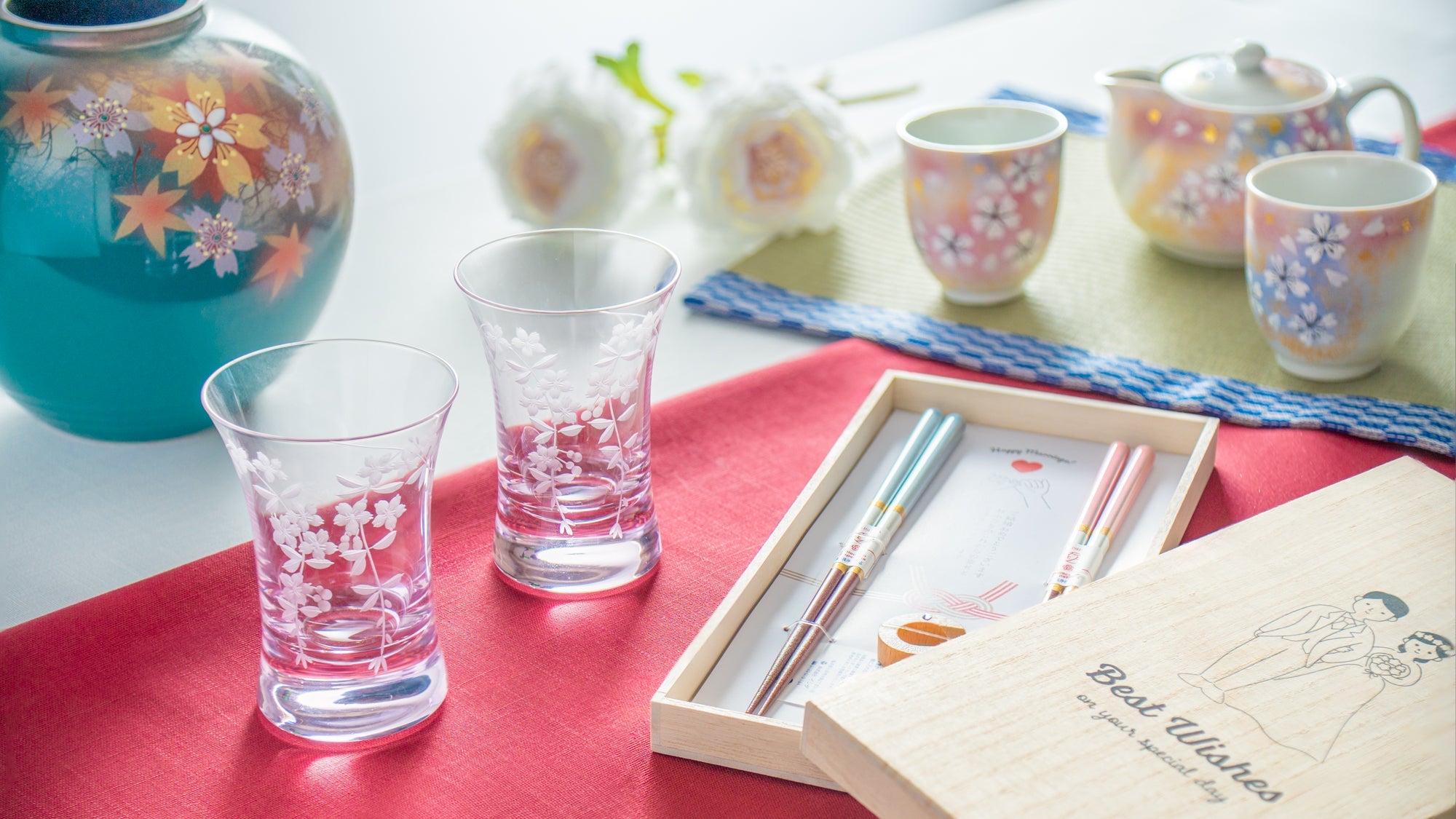
Interview With An Artist: Alyne Ohigashi - Tobe Ware
Written by Team MUSUBI

In a studio located in the peaceful mountains near the Seto Inland Sea, Alyne Ohigashi spends her days creating beautiful Tobe ware. Alyne was born in the Philippines and moved to Tobe 40 years ago. She is the artist at Higashi Kiln, a Tobe ware kiln.
Explore her world filled with artistic inspirations and warm loving memories, and learn about the story behind her works and about Tobe ware.
tables of contents
A New Take on Tobe ware
Alyne expresses her own take on Tobe ware by further pursuing ease of use and creating beautiful nature-inspired designs.


"As regards to my designs, I only paint things that I've actually seen with my own eyes. The flowers in my garden inspire me so much, always giving me ideas of what to draw next. I have a degree in agriculture so I'm familiar with the structure of plants and flowers. The flowers in my garden are my models."
One of Alyne's popular items at MUSUBI KILN is her P.S. Blue mug. Alyne incorporates a unique technique to paint the gentle soft flowers, and paints them in a lovely blue color.
"The technique I use is called 'Washi zome' which is adding designs and colors to unglazed items using Japanese Washi paper. The traditional technique of 'Washi-zome' used by skilled craftsmen is done by applying Kaya (cotton mosquito net material) and indigo blue (gosu) paint. In replacement of the Kaya, I use Washi paper which was introduced to me by another Japanese craftsman."

The Path of Becoming an Artist
Although Alyne is presently a renowned Tobe ware artist with many awards and honorable mentions, the road to her success was not an easy one.
She first started out by helping her husband's family business.
"I didn't have a real background in art, so everything I know and can do is self-taught. I still prefer reading books and looking at beautiful illustrations and photos instead of checking the Internet."
"My drawings and style may be unconventional, but I think that's okay. I like my designs and they reflect what I see in my natural surroundings. The things that I see pass through a filter in my brain and then my hands express what I see. That’s how it works for me."
But soon after the family business had started to take off, her husband passed away very suddenly.
Alyne was left with the big challenge of balancing motherhood and being an artist.
"My first priority was being a mom. I never said 'wait I'm busy.' Instead I would say 'just give me a moment.' That’s what I said to my three children and what I say to my three grandchildren."
"But that doesn't mean work has second priority because what I do is not work for me. It's a way of life. I love what I do. I just happen to receive something in return for what I love to do. There were no boundaries between work and my daily life. And balancing comes naturally when there are no boundaries. I have proudly succeeded in raising three sons on my own as a single mother."
"My works are dedicated to the smallest form of society, the family"

"Family" plays an important part in Alyne’s life and is what gives her the inspiration to create tableware.
"My childhood days were full of fiestas and parties. As I come from a very big family, there would be 30 to 40 people at family gatherings and we would all enjoy good food on lavish plates. And at that table, what I felt was pure happiness."
"Family joined together at a table decorated with good food and set with everyday-use plates, bowls, glasses is what gives us a happy life and good memories. My work is dedicated to the smallest element of society, family."
"As I grew older, I felt the need to create something that I could pass on to the next generation. Through my work, I wanted to send the message that we can enjoy life with unique items on our dining table. I try to create tableware that will symbolize the uniformity of a family. Tableware items can be cherished at a home for a long time and can help create memories that will last a lifetime."
Tobe Ware for the Next Generation

It's not uncommon for kilns in Tobe to be managed by an individual or a family. Therefore, most of the production process is done by hand without the use of large machinery or equipment. And along with many other kilns across Japan, kilns in Tobe are also faced with the dilemma of whether to make the transition to mass production or to maintain their present "family-business" production style.
We asked about her thoughts on the future of Tobe ware.
"I personally feel that the present family-business style production is why Tobe ware has been able to retain its intricate beauty. And it's this style of production that helps maintain the high quality of Tobe ware. Kilns in Tobe are extremely dedicated to their craft and have held the same high level of commitment for hundreds of years."
"Many centuries ago, the porcelain used to manufacture Tobe ware was called 'white gold.' That was how precious porcelain was at that time. I hope that many people around the world will get a chance to see and enjoy the high quality of Tobe ware."
"We sometimes take for granted all the flowers and plants we see in nature. I want to leave something for the next generation. I want the next generation to know what existed during my lifetime on earth. Ceramics will exist forever as they do not diminish in form. Even if it's just a fragment, it will leave a message to future generations. With that, I feel contentment as a ceramic artist."
The interview with Alyne was very candid and insightful. Her words gave us a deeper appreciation and understanding of her beautiful pieces of Tobe tableware.
This year she hopes to work on more artistic pieces like art objects and more unique tableware items. In the future, she plans to publish a book about the philosophy behind her lifestyle.
Tobe Higashi Kiln

Higashi Kiln's style is famous for the glass-like smoothness and the usage of the soft and pastel colors like watercolor paintings, which is not bound by conventional frameworks of Tobe ware. The painting is performed by female artist, Alyne Ohigashi, who was born in the Philippines and has been involved with creating Tobe ware items for more than 30 years at Higashi Kiln.












Leave a comment
This site is protected by hCaptcha and the hCaptcha Privacy Policy and Terms of Service apply.